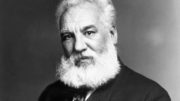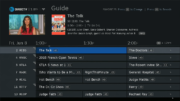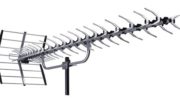“Should I get a UHF or VHF antenna?” The antenna experts at Solid Signal usually recommend a combination VHF/UHF TV antenna.
When people have a choice, they often become confused. No one wants to live with the regrets of making the wrong decision. This causes them to agonize over which way to go, which can lead to making no choice at all. Unfortunately, this often happens to cord-cutters. When asked if they would like a VHF or UHF antenna, the sweat starts to gather on their foreheads. Most don’t know what UHF and VHF are, let alone which antenna they need. We here at The Solid Signal Blog are here to help by giving you all the facts.
VHF and UHF
VHF stands for “very high frequency.” This is the range of radio frequency electromagnetic waves from 30 MHz to 300 MHz. It’s commonly used for VHF, FM radio, and TV broadcasting, and similar systems. UHF stands for “ultra-high frequencies.” It defines the whole range of 300 MHz to 3 GHz, but TV broadcasting takes place from 470 to 700MHz. The rest of the UHF frequency range is used for cell phone communication.
Today’s over-the-air TV stations are broadcast on VHF or UHF frequencies. VHF antennas get stations broadcast on the VHF frequencies, while UHF antennas pick up UHF broadcasts. Since TV’s switch to digital broadcasting, a lot of the stations are UHF. These are channels 14 through 36. Quite a few stations moved to VHF. These are channels 7-13. Very few of them are Low VHF, which are channels 2-6.
The Truth About TV Channel Numbers
It’s easy to say that VHF is channels 2-13 while UHF is channels 14-51. Things can get a bit tricky, though. TV’s switch to digital reassigned some stations to radio frequency numbers different from their station numbers. For example, New York City’s CBS affiliate is channel 2, but its true RF station number is 33. You can still get to this channel by punching 2 on your remote control.
Differences in station numbers and radio frequencies exist in all TV markets. There are websites to help you determine the RF frequencies for every channel in your area. If you can’t decide between a UHF or VHF antenna, this can help you. Here’s what you should do to help you make this decision:
-
Make a list of your favorite over-the-air TV shows.
-
Find an online listing of TV channels, program listings, and radio frequencies for each station in your market.
-
Take note of which of your favorite channels fall within the UHF/VHF designations.
-
Base your decision on where the majority of your favorite shows/stations reside.
Or… There’s An Easier Way
Let’s save you time and trouble. If you followed the steps above, you’d find some of your favorite shows on both VHF and UHF stations. It tends to work out this way for most people in most TV markets. That’s why we recommend a combination VHF/UHF TV antenna. In most cases, it’s enough to receive the stations you want without having to sacrifice a particular show or station you love.
You also don’t really have to worry about radio frequency numbers. Leave that to geeks like me who write for The Solid Signal Blog. There’s this thing called the Program and System Information Protocol, or PSIP. It means you don’t have to worry about the differences between channel and radio frequency numbers. PSIP tells your TV what channel you really want when you push its numbers on your remote. For a more detailed breakdown of this, check out Stuart Sweet’s post about PSIP.
Now It’s Time to Cut the Cord
A UHF/VHF antenna is a great way for many cord-cutters. But which one should you get? There are MANY to choose from, after all. Well, the antenna experts here at Solid Signal are happy to help. They’ll answer any questions and match you with the right TV antenna. If you’re ready for free TV and no cable bills, call us at 888-233-7563. You can also fill out the form below and send it to us. One of our antenna specialists will be in touch!





